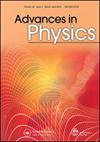二维物质:秩序、曲率和缺陷
IF 13.8
1区 物理与天体物理
Q1 PHYSICS, CONDENSED MATTER
引用次数: 254
摘要
自然界和合成世界中的许多系统都涉及二维表面上单位的有序排列。我们在这里回顾下表面的拓扑结构及其高斯曲率所起的基本作用。拓扑决定了基态缺陷结构的某些广泛特征,但曲率驱动的能量学控制了有序相的详细结构。令人惊讶的是,在基态中出现的结构通常是热激发,因此在零温度下是禁止的。例如,在最小系统尺寸以上的球形晶体中,以晶界疤痕形式出现的过量位错,在环面六边形中,位错脱离束缚,在球形晶体中,间隙分异,在环面晶体中,出现分离良好的位错。许多分析得出的普遍预测并不依赖于最初导致秩序的微观相互作用的细节。这些预测将受到许多实验软物质和硬物质系统的检验,这些系统会导致弯曲的有序结构,比如胶体粒子在一种液体的水滴上自组装到另一种液体中。缺陷本身可以被功能化以产生具有定向键的配体。因此,纳米到中观尺度的超原子可以被设计成具有特定的价电子,用于构建超分子和新型块状材料。粒子数、几何长宽比和弹性模量的各向异性等参数允许超原子和相关超分子的精确结构调整。因此,从基础和材料科学/超分子化学的角度来看,该领域具有巨大的潜力。本文章由计算机程序翻译,如有差异,请以英文原文为准。
Two-dimensional matter: order, curvature and defects
Many systems in nature and the synthetic world involve ordered arrangements of units on two-dimensional surfaces. We review here the fundamental role payed by both the topology of the underlying surface and its Gaussian curvature. Topology dictates certain broad features of the defect structure of the ground state but curvature-driven energetics control the detailed structure of the ordered phases. Among the surprises are the appearance in the ground state of structures that would normally be thermal excitations and thus prohibited at zero temperature. Examples include excess dislocations in the form of grain boundary scars for spherical crystals above a minimal system size, dislocation unbinding for toroidal hexatics, interstitial fractionalization in spherical crystals and the appearance of well-separated disclinations for toroidal crystals. Much of the analysis leads to universal predictions that do not depend on the details of the microscopic interactions that lead to order in the first place. These predictions are subject to test by the many experimental soft- and hard-matter systems that lead to curved ordered structures such as colloidal particles self-assembling on droplets of one liquid in a second liquid. The defects themselves may be functionalized to create ligands with directional bonding. Thus, nano- to meso-scale superatoms may be designed with specific valency for use in building supermolecules and novel bulk materials. Parameters such as particle number, geometrical aspect ratios and anisotropy of elastic moduli permit the tuning of the precise architecture of the superatoms and associated supermolecules. Thus, the field has tremendous potential from both a fundamental and materials science/supramolecular chemistry viewpoint.
求助全文
通过发布文献求助,成功后即可免费获取论文全文。
去求助
来源期刊

Advances in Physics
物理-物理:凝聚态物理
CiteScore
67.60
自引率
0.00%
发文量
1
期刊介绍:
Advances in Physics publishes authoritative critical reviews by experts on topics of interest and importance to condensed matter physicists. It is intended for motivated readers with a basic knowledge of the journal’s field and aims to draw out the salient points of a reviewed subject from the perspective of the author. The journal''s scope includes condensed matter physics and statistical mechanics: broadly defined to include the overlap with quantum information, cold atoms, soft matter physics and biophysics. Readership: Physicists, materials scientists and physical chemists in universities, industry and research institutes.
 求助内容:
求助内容: 应助结果提醒方式:
应助结果提醒方式:


